-
EXECUTIVE SUMMARY
-
MARKET INTRODUCTION
-
Definition
-
Scope of the Study
- Research Objective
- Assumptions
- Limitations
-
RESEARCH METHODOLOGY
-
Overview
-
Data Mining
-
Secondary Research
-
Primary Research
- Primary Interviews and Information Gathering Process
- Breakdown of Primary Respondents
-
Forecasting Model
-
Market Size Estimation
- Bottom-Up Approach
- Top-Down Approach
-
Data Triangulation
-
Validation
-
MARKET DYNAMICS
-
Overview
-
Drivers
-
Restraints
-
Opportunities
-
MARKET FACTOR ANALYSIS
-
Value Chain Analysis
-
Porter’s Five Forces Analysis
- Bargaining Power of Suppliers
- Bargaining Power of Buyers
- Threat of New Entrants
- Threat of Substitutes
- Intensity of Rivalry
-
COVID-19 Impact Analysis
- Market Impact Analysis
- Regional Impact
- Opportunity and Threat Analysis
-
GLOBAL LIQUID SOAP MARKET, BY PRODUCT TYPE
-
Overview
-
Bath & Body Soaps
-
Dish Wash Soaps
-
Laundry Soaps
-
Others (Surface Cleaners and Car Wash Soaps)
-
GLOBAL LIQUID SOAP MARKET, BY APPLICATION
-
Overview
-
Household
-
Commercial
-
GLOBAL LIQUID SOAP MARKET, BY DISTRIBUTION CHANNEL
-
Overview
-
Supermarkets/Hypermarkets
-
Convenience Stores
-
Online Sales Channel
-
Others (Pharmacies and Department Stores)
-
GLOBAL LIQUID SOAP MARKET, BY REGION
-
Overview
-
North America
- US
- Canada
-
Europe
- Germany
- France
- UK
- Italy
- Spain
- Rest of Europe
-
Asia-Pacific
- China
- India
- Japan
- South Korea
- Australia
- Rest of Asia-Pacific
-
Rest of the World
- Middle East
- Africa
- Latin America
-
COMPETITIVE LANDSCAPE
-
Overview
-
Competitive Analysis
-
Market Share Analysis
-
Major Growth Strategy in the Global Liquid Soap Market,
-
Competitive Benchmarking
-
Leading Players in Terms of Number of Developments in the Global Liquid Soap Market,
-
Key developments and Growth Strategies
- New Product Launch/Service Deployment
- Merger & Acquisitions
- Joint Ventures
-
Major Players Financial Matrix
- Sales & Operating Income, 2022
- Major Players R&D Expenditure. 2022
-
COMPANY PROFILES
-
Procter & Gamble (U.S.)
- Company Overview
- Financial Overview
- Products Offered
- Key Developments
- SWOT Analysis
- Key Strategies
-
Henkel AG & Co. KGaA (Germany).
- Company Overview
- Financial Overview
- Products Offered
- Key Developments
- SWOT Analysis
- Key Strategies
-
Colgate-Palmolive Company (U.S.)
- Company Overview
- Financial Overview
- Products Offered
- Key Developments
- SWOT Analysis
- Key Strategies
-
Unilever (U.K.)
- Company Overview
- Financial Overview
- Products Offered
- Key Developments
- SWOT Analysis
- Key Strategies
-
Reckitt Benckiser Group plc (U.K.)
- Company Overview
- Financial Overview
- Products Offered
- Key Developments
- SWOT Analysis
- Key Strategies
-
Kimberly-Clark Worldwide, Inc. (U.S.)
- Company Overview
- Financial Overview
- Products Offered
- Key Developments
- SWOT Analysis
- Key Strategies
-
The 3M Company (U.S.)
- Company Overview
- Financial Overview
- Products Offered
- Key Developments
- SWOT Analysis
- Key Strategies
-
Lion Corporation (Japan)
- Company Overview
- Financial Overview
- Products Offered
- Key Developments
- SWOT Analysis
- Key Strategies
-
KAO CORPORATION (JAPAN)
- Company Overview
- Financial Overview
- Products Offered
- Key Developments
- SWOT Analysis
- Key Strategies
-
Johnson & Johnson Services, Inc. (U.S.)
- Company Overview
- Financial Overview
- Products Offered
- Key Developments
- SWOT Analysis
- Key Strategies
-
APPENDIX
-
References
-
Related Reports
-
-
LIST OF TABLES
-
GLOBAL LIQUID SOAP MARKET, SYNOPSIS, 2018-2032
-
GLOBAL LIQUID SOAP MARKET, ESTIMATES & FORECAST, 2018-2032 (USD BILLION)
-
GLOBAL LIQUID SOAP MARKET, BY PRODUCT TYPE, 2018-2032 (USD BILLION)
-
GLOBAL LIQUID SOAP MARKET, BY APPLICATION, 2018-2032 (USD BILLION)
-
GLOBAL LIQUID SOAP MARKET, BY DISTRIBUTION CHANNEL, 2018-2032 (USD BILLION)
-
NORTH AMERICA: LIQUID SOAP MARKET, BY PRODUCT TYPE, 2018-2032 (USD BILLION)
-
NORTH AMERICA: LIQUID SOAP MARKET, BY APPLICATION, 2018-2032 (USD BILLION)
-
NORTH AMERICA: LIQUID SOAP MARKET, BY DISTRIBUTION CHANNEL, 2018-2032 (USD BILLION)
-
US: LIQUID SOAP MARKET, BY PRODUCT TYPE, 2018-2032 (USD BILLION)
-
US: LIQUID SOAP MARKET, BY APPLICATION, 2018-2032 (USD BILLION)
-
US: LIQUID SOAP MARKET, BY DISTRIBUTION CHANNEL, 2018-2032 (USD BILLION)
-
CANADA: LIQUID SOAP MARKET, BY PRODUCT TYPE, 2018-2032 (USD BILLION)
-
CANADA: LIQUID SOAP MARKET, BY APPLICATION, 2018-2032 (USD BILLION)
-
CANADA: LIQUID SOAP MARKET, BY DISTRIBUTION CHANNEL, 2018-2032 (USD BILLION)
-
EUROPE: LIQUID SOAP MARKET, BY PRODUCT TYPE, 2018-2032 (USD BILLION)
-
EUROPE: LIQUID SOAP MARKET, BY APPLICATION, 2018-2032 (USD BILLION)
-
EUROPE: LIQUID SOAP MARKET, BY DISTRIBUTION CHANNEL, 2018-2032 (USD BILLION)
-
GERMANY: LIQUID SOAP MARKET, BY PRODUCT TYPE, 2018-2032 (USD BILLION)
-
GERMANY: LIQUID SOAP MARKET, BY APPLICATION, 2018-2032 (USD BILLION)
-
GERMANY: LIQUID SOAP MARKET, BY DISTRIBUTION CHANNEL, 2018-2032 (USD BILLION)
-
FRANCE: LIQUID SOAP MARKET, BY PRODUCT TYPE, 2018-2032 (USD BILLION)
-
FRANCE: LIQUID SOAP MARKET, BY APPLICATION, 2018-2032 (USD BILLION)
-
FRANCE: LIQUID SOAP MARKET, BY DISTRIBUTION CHANNEL, 2018-2032 (USD BILLION)
-
ITALY: LIQUID SOAP MARKET, BY PRODUCT TYPE, 2018-2032 (USD BILLION)
-
ITALY: LIQUID SOAP MARKET, BY APPLICATION, 2018-2032 (USD BILLION)
-
ITALY: LIQUID SOAP MARKET, BY DISTRIBUTION CHANNEL, 2018-2032 (USD BILLION)
-
SPAIN: LIQUID SOAP MARKET, BY PRODUCT TYPE, 2018-2032 (USD BILLION)
-
SPAIN: LIQUID SOAP MARKET, BY APPLICATION, 2018-2032 (USD BILLION)
-
SPAIN: LIQUID SOAP MARKET, BY DISTRIBUTION CHANNEL, 2018-2032 (USD BILLION)
-
UK: LIQUID SOAP MARKET, BY PRODUCT TYPE, 2018-2032 (USD BILLION)
-
UK: LIQUID SOAP MARKET, BY APPLICATION, 2018-2032 (USD BILLION)
-
UK: LIQUID SOAP MARKET, BY DISTRIBUTION CHANNEL, 2018-2032 (USD BILLION)
-
REST OF EUROPE: LIQUID SOAP MARKET, BY PRODUCT TYPE, 2018-2032 (USD BILLION)
-
REST OF EUROPE: LIQUID SOAP MARKET, BY APPLICATION, 2018-2032 (USD BILLION)
-
REST OF EUROPE: LIQUID SOAP MARKET, BY DISTRIBUTION CHANNEL, 2018-2032 (USD BILLION)
-
ASIA-PACIFIC: LIQUID SOAP MARKET, BY PRODUCT TYPE, 2018-2032 (USD BILLION)
-
ASIA-PACIFIC: LIQUID SOAP MARKET, BY APPLICATION, 2018-2032 (USD BILLION)
-
ASIA-PACIFIC: LIQUID SOAP MARKET, BY DISTRIBUTION CHANNEL, 2018-2032 (USD BILLION)
-
JAPAN: LIQUID SOAP MARKET, BY PRODUCT TYPE, 2018-2032 (USD BILLION)
-
JAPAN: LIQUID SOAP MARKET, BY APPLICATION, 2018-2032 (USD BILLION)
-
JAPAN: LIQUID SOAP MARKET, BY DISTRIBUTION CHANNEL, 2018-2032 (USD BILLION)
-
CHINA: LIQUID SOAP MARKET, BY PRODUCT TYPE, 2018-2032 (USD BILLION)
-
CHINA: LIQUID SOAP MARKET, BY APPLICATION, 2018-2032 (USD BILLION)
-
CHINA: LIQUID SOAP MARKET, BY DISTRIBUTION CHANNEL, 2018-2032 (USD BILLION)
-
INDIA: LIQUID SOAP MARKET, BY PRODUCT TYPE, 2018-2032 (USD BILLION)
-
INDIA: LIQUID SOAP MARKET, BY APPLICATION, 2018-2032 (USD BILLION)
-
INDIA: LIQUID SOAP MARKET, BY DISTRIBUTION CHANNEL, 2018-2032 (USD BILLION)
-
AUSTRALIA: LIQUID SOAP MARKET, BY PRODUCT TYPE, 2018-2032 (USD BILLION)
-
AUSTRALIA: LIQUID SOAP MARKET, BY APPLICATION, 2018-2032 (USD BILLION)
-
AUSTRALIA: LIQUID SOAP MARKET, BY DISTRIBUTION CHANNEL, 2018-2032 (USD BILLION)
-
SOUTH KOREA: LIQUID SOAP MARKET, BY PRODUCT TYPE, 2018-2032 (USD BILLION)
-
SOUTH KOREA: LIQUID SOAP MARKET, BY APPLICATION, 2018-2032 (USD BILLION)
-
SOUTH KOREA: LIQUID SOAP MARKET, BY DISTRIBUTION CHANNEL, 2018-2032 (USD BILLION)
-
REST OF ASIA-PACIFIC: LIQUID SOAP MARKET, BY PRODUCT TYPE, 2018-2032 (USD BILLION)
-
REST OF ASIA-PACIFIC: LIQUID SOAP MARKET, BY APPLICATION, 2018-2032 (USD BILLION)
-
REST OF ASIA-PACIFIC: LIQUID SOAP MARKET, BY DISTRIBUTION CHANNEL, 2018-2032 (USD BILLION)
-
REST OF THE WORLD: LIQUID SOAP MARKET, BY PRODUCT TYPE, 2018-2032 (USD BILLION)
-
REST OF THE WORLD: LIQUID SOAP MARKET, BY APPLICATION, 2018-2032 (USD BILLION)
-
REST OF THE WORLD: LIQUID SOAP MARKET, BY DISTRIBUTION CHANNEL, 2018-2032 (USD BILLION)
-
MIDDLE EAST: LIQUID SOAP MARKET, BY PRODUCT TYPE, 2018-2032 (USD BILLION)
-
MIDDLE EAST: LIQUID SOAP MARKET, BY APPLICATION, 2018-2032 (USD BILLION)
-
MIDDLE EAST: LIQUID SOAP MARKET, BY DISTRIBUTION CHANNEL, 2018-2032 (USD BILLION)
-
AFRICA: LIQUID SOAP MARKET, BY PRODUCT TYPE, 2018-2032 (USD BILLION)
-
AFRICA: LIQUID SOAP MARKET, BY APPLICATION, 2018-2032 (USD BILLION)
-
AFRICA: LIQUID SOAP MARKET, BY DISTRIBUTION CHANNEL, 2018-2032 (USD BILLION)
-
LATIN AMERICA: LIQUID SOAP MARKET, BY PRODUCT TYPE, 2018-2032 (USD BILLION)
-
LATIN AMERICA: LIQUID SOAP MARKET, BY APPLICATION, 2018-2032 (USD BILLION)
-
LATIN AMERICA: LIQUID SOAP MARKET, BY DISTRIBUTION CHANNEL, 2018-2032 (USD BILLION)
-
LIST OF FIGURES
-
RESEARCH PROCESS
-
MARKET STRUCTURE FOR THE GLOBAL LIQUID SOAP MARKET
-
MARKET DYNAMICS FOR THE GLOBAL LIQUID SOAP MARKET
-
GLOBAL LIQUID SOAP MARKET, SHARE (%), BY PRODUCT TYPE, 2021
-
GLOBAL LIQUID SOAP MARKET, SHARE (%), BY APPLICATION, 2021
-
GLOBAL LIQUID SOAP MARKET, SHARE (%), BY DISTRIBUTION CHANNEL, 2021
-
GLOBAL LIQUID SOAP MARKET, SHARE (%), BY REGION, 2021
-
NORTH AMERICA: LIQUID SOAP MARKET, SHARE (%), BY REGION, 2021
-
EUROPE: LIQUID SOAP MARKET, SHARE (%), BY REGION, 2021
-
ASIA-PACIFIC: LIQUID SOAP MARKET, SHARE (%), BY REGION, 2021
-
REST OF THE WORLD: LIQUID SOAP MARKET, SHARE (%), BY REGION, 2021
-
GLOBAL LIQUID SOAP MARKET: COMPANY SHARE ANALYSIS, 2021 (%)
-
PROCTER & GAMBLE (U.S.): FINANCIAL OVERVIEW SNAPSHOT
-
PROCTER & GAMBLE (U.S.): SWOT ANALYSIS
-
HENKEL AG & CO. KGAA (GERMANY).: FINANCIAL OVERVIEW SNAPSHOT
-
HENKEL AG & CO. KGAA (GERMANY).: SWOT ANALYSIS
-
COLGATE-PALMOLIVE COMPANY (U.S.): FINANCIAL OVERVIEW SNAPSHOT
-
COLGATE-PALMOLIVE COMPANY (U.S.): SWOT ANALYSIS
-
UNILEVER (U.K.): FINANCIAL OVERVIEW SNAPSHOT
-
UNILEVER (U.K.): SWOT ANALYSIS
-
RECKITT BENCKISER GROUP PLC (U.K.): FINANCIAL OVERVIEW SNAPSHOT
-
RECKITT BENCKISER GROUP PLC (U.K.): SWOT ANALYSIS
-
KIMBERLY-CLARK WORLDWIDE, INC. (U.S.): FINANCIAL OVERVIEW SNAPSHOT
-
KIMBERLY-CLARK WORLDWIDE, INC. (U.S.): SWOT ANALYSIS
-
THE 3M COMPANY (U.S.): FINANCIAL OVERVIEW SNAPSHOT
-
THE 3M COMPANY (U.S.): SWOT ANALYSIS
-
LION CORPORATION (JAPAN): FINANCIAL OVERVIEW SNAPSHOT
-
LION CORPORATION (JAPAN): SWOT ANALYSIS
-
KAO CORPORATION (JAPAN): FINANCIAL OVERVIEW SNAPSHOT
-
KAO CORPORATION (JAPAN): SWOT ANALYSIS
-
JOHNSON & JOHNSON SERVICES, INC. (U.S.): FINANCIAL OVERVIEW SNAPSHOT
-
JOHNSON & JOHNSON SERVICES, INC. (U.S.): SWOT ANALYSIS
-
'

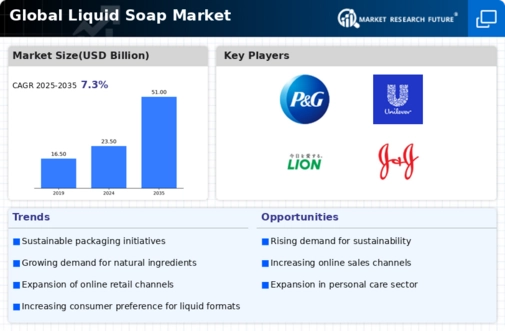
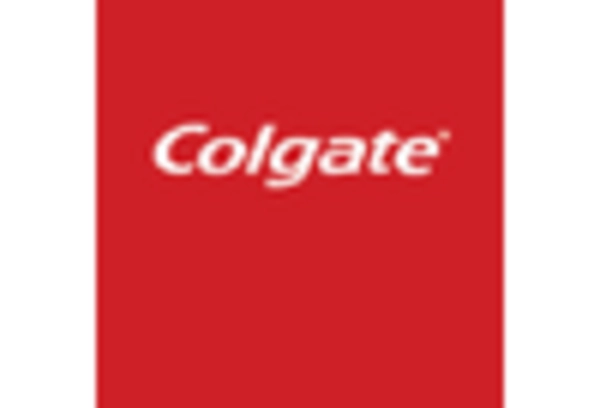
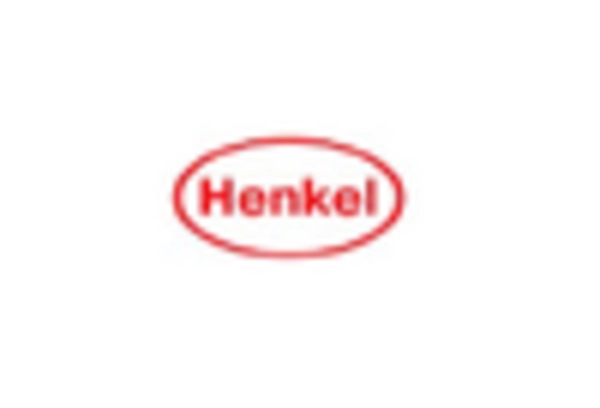
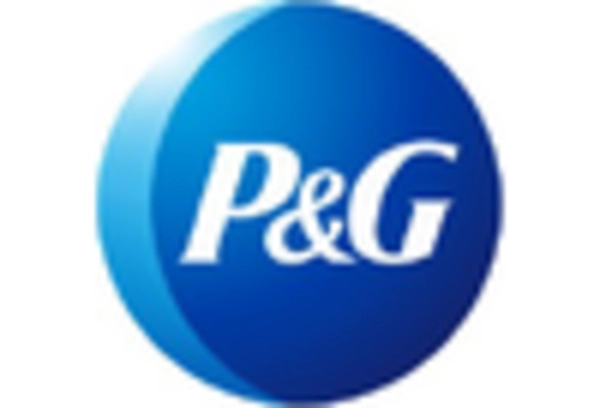
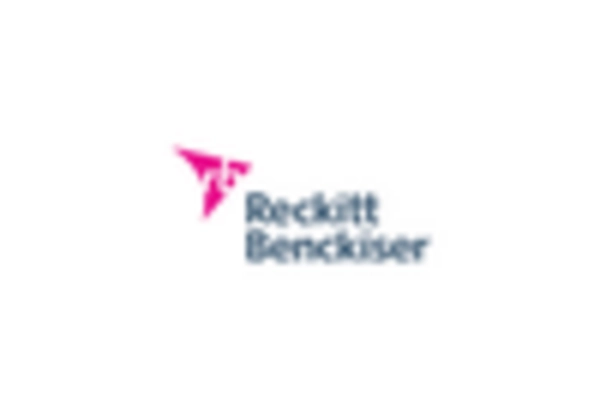
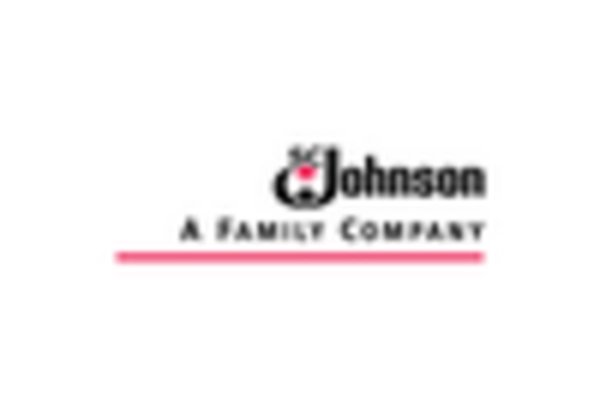
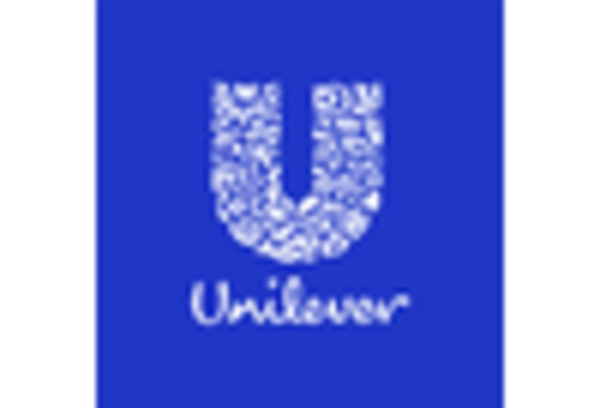









Leave a Comment